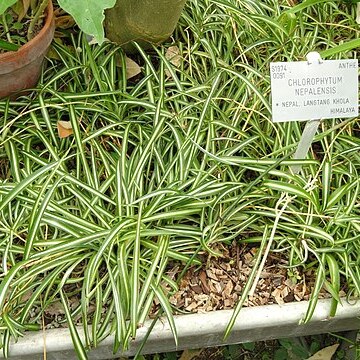A herb. It grows to about 60 cm high. It has rhizomes or underground stems which are short. The leaves are near the base. They are narrow. They are 8-60 cm long by 0.6-2 cm wide. The flowers are white. They occur in long erect racemes. The fruit is a capsule which is oval. It is 6-9 mm across. There are several seeds.

